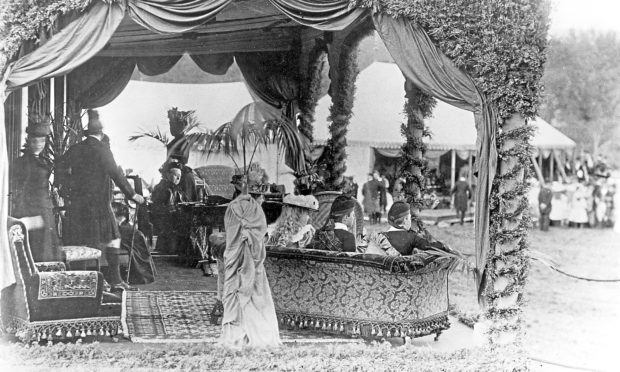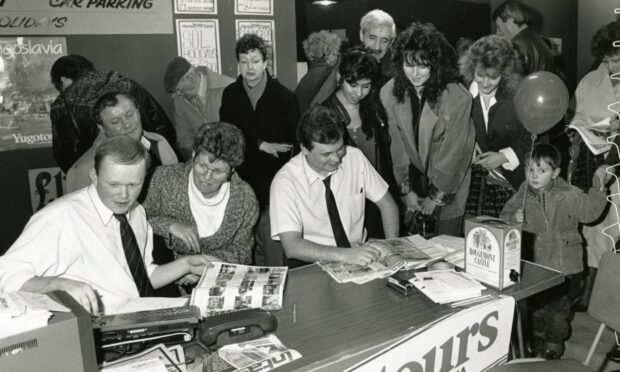Across Britain, joyous citizens lit bonfires to celebrate the coronation of Queen Victoria in June 1838.
In Dundee, tanked-up locals did the same but ended the day trying to torch the town.
Fun and frolics soon became fast and furious and jest soon led to mischief, this newspaper reported.
A disorderly crowd of men and boys of the lowest grade gathered in High Street to mark the coronation, according to reporters of the day.
After 21-gun salutes at noon and 2pm, the roughs found they had little to do so they began lobbing sticks at each other and then rushing from one end of the town centre to the other.
As evening began, fireworks were unleashed and bonfires lit. At 9pm, the mob tried to set a fire in front of the Town House on High Street.
To fuel the blaze, they ripped down palings marking the line of what is now Reform Street, pulled doors from their hinges and tore down wooden scaffolding.
The Courier reported: “One young fellow, dressed in white fustian, carried a formidable pole five-feet long and cleared the street before him.”
When police intervened, the crowd, led by blacksmith David Lyon, printer Jonathan Hazeel and machine-maker William Gunn, careered to the docks where the brig Ceres was berthed.
One of her boats was on the quayside and they had no hesitation dragging it to High Street to create a mobile bonfire.
There they loaded it with palings, tar and oil before dragging the blazing vessel through the town.
In need of more wood, they toyed with the idea of stripping a wooden flax warehouse at the Meadows but soon turned their attention to a wooden theatre on the site of what became Dundee West Railway Station.
It was called the Royal Pantheon and had opened a year before but performance standards had fallen quickly and it became known as a place of low entertainment.
Many of those in the braying crowd were said to have been among its best customers.
The owner, James Scott, had taken his company into the country for a picnic to mark the coronation, so the building was empty.
Immediately, the thugs began ripping wooden panels from the theatre. Then they prised open the door and handed out theatrical sets and chairs to pile on the burning boat.
By this time, according to The Courier, 5,000 people were involved in the disturbance. Eventually, the boat was dragged into the theatre. The building went up in an instant. There were fears for surrounding buildings and wooden boats in the dock but the night was still and it did not spread.
We reported at the time: “During the kindling of the Pantheon, the cheers of the mob had attracted a great concourse of people witnessing the display of fireworks. It was seen from the first moment the fire fixed on the wood that the destruction of the theatre was inevitable but none were prepared for the awful volume of flame the burning of the wood produced.
“In a moment, the whole erection burst into one mass of fire, red and scorching. The flames shot up into the sky to an immense height and the heat thrown out cleared the open ground around for many yards.”
By late evening, Mr Scott and his staff had returned from their picnic and were met by a sight of devastation. He valued the extent of the damage at £622, or £67,000 in today’s money. He demanded compensation from the council and after a two-year legal battle, he got his cash.
However, he managed to fund the replacement of the Pantheon himself and it reopened only two months after the fire.
Police had not been idle during the riot. Officers, some in plain clothes, had been mingling among the crowd. The next day they picked up Lyon, Hazeel and Gunn. They were put on trial at the High Court in Perth in October that year and were all found guilty. Lyon was jailed for a year, Hazeel for eight months and Gunn for four.










